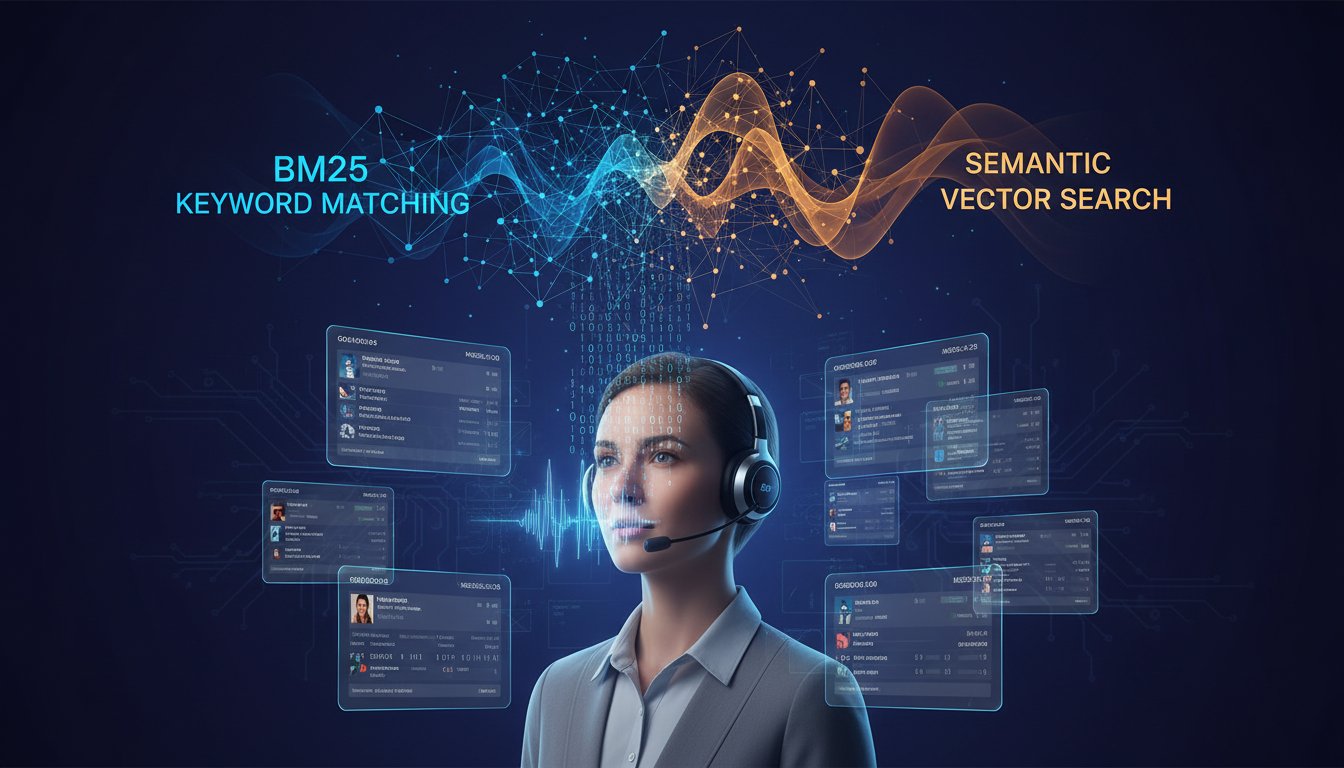Revolutionizing Customer Onboarding: Voice-Powered Welcomes with Intercom and ElevenLabs
First impressions are paramount, especially in the digital realm. For new customers, the onboarding experience sets the tone for their entire journey with your product or service. While personalized text-based messages are standard, imagine the impact of a warm, personally addressed voice message, delivered in your customer’s native language, right when they sign up. This isn’t futuristic fantasy; it’s achievable today by integrating the advanced AI voice generation capabilities of ElevenLabs with Intercom, the popular customer communication platform.
This technical walkthrough will guide developers, customer experience managers, and technical marketers through creating a dynamic, multilingual voice welcome experience. We’ll cover API setups, leveraging ElevenLabs’ latest features, and configuring Intercom to automate these rich interactions. Such an integration can significantly enhance customer engagement, accessibility, and satisfaction, particularly within sophisticated enterprise RAG (Retrieval Augmented Generation) systems where nuanced communication is key.
Why Integrate ElevenLabs Voice into Your Intercom Onboarding?
Integrating AI-generated voice offers several compelling advantages:
- Enhanced Personalization: Hearing a message, especially one that uses their name and is in their language, creates a deeper connection than plain text.
- Increased Accessibility: Voice messages cater to users with visual impairments or those who prefer auditory information.
- Improved Engagement: Novel and engaging experiences like voice messages can capture attention more effectively during the critical onboarding phase.
- Global Reach: Effortlessly greet customers in numerous languages, making your platform feel truly global and inclusive.
- Emotional Connection: ElevenLabs’ v3 models offer highly expressive speech, allowing you to convey warmth and enthusiasm, fostering a positive emotional connection from day one.
- Higher Perceived Value: A sophisticated, multilingual voice onboarding system can differentiate your brand and signal a commitment to cutting-edge customer experience.
For organizations utilizing enterprise RAG systems, this integration can serve as an innovative output channel, delivering AI-curated information through a highly personal and accessible voice medium.
Prerequisites
Before we dive in, ensure you have the following:
- Intercom Account: An active Intercom account with administrative privileges to configure Series, Rules, and Webhooks.
- ElevenLabs Account: Sign up for an ElevenLabs account and obtain your API key.
- Middleware (Recommended): A serverless function environment (e.g., AWS Lambda, Google Cloud Functions, Azure Functions, Vercel Functions) or an iPaaS solution. This will act as the bridge between Intercom and ElevenLabs.
- Basic API Knowledge: Familiarity with REST APIs, JSON, and webhook concepts.
Step 1: Setting Up ElevenLabs
ElevenLabs is renowned for its realistic AI voices and powerful text-to-speech (TTS) capabilities. Their latest models (like eleven_multilingual_v2 or newer) support a wide array of languages and expressive styles.
- Get Your API Key: After creating your ElevenLabs account, navigate to your profile or API section to find your API key. Keep this key secure.
- Explore Voices and Models: Familiarize yourself with the available voices. You can use pre-set voices or even clone your own (ensure ethical use and consent). The multilingual models are ideal for this project.
-
API Interaction (Conceptual): To generate speech, you’ll typically make a POST request to an endpoint like
https://api.elevenlabs.io/v1/text-to-speech/{voice_id}.- Headers: Include your
xi-api-keyandContent-Type: application/json. - Body (JSON):
json
{
"text": "Hello [Customer Name], welcome to our platform!",
"model_id": "eleven_multilingual_v2", // Or your preferred model
"voice_settings": {
"stability": 0.5,
"similarity_boost": 0.75
}
} - You’ll receive an audio file (e.g., MP3) in response or a link to it.
- Headers: Include your
Step 2: Configuring Intercom to Trigger Voice Messages
Intercom’s automation features are key to triggering the voice welcome.
- Identify the Trigger: The most common trigger is a new user signing up. You can use Intercom Rules or Series for this.
- Rule Example: Trigger: “New user created” or “User matches specific criteria (e.g., first seen)”.
- Action – Send a Webhook: The primary action will be to send a webhook from Intercom to your middleware. This webhook will carry the necessary customer data.
- Webhook URL: This will be the endpoint of your serverless function.
- Payload: Customize the JSON payload to include essential user attributes. Intercom allows you to use liquid tags for this:
json
{
"intercom_user_id": "{{ user_id }}",
"email": "{{ email }}",
"name": "{{ name | default: 'there' }}", // Provides a fallback
"language": "{{ user.custom_attributes.preferred_language | default: 'en' }}" // Assuming you store language preference
} - Ensure you have a custom attribute in Intercom (e.g.,
preferred_language) to store the user’s language choice, which can be set during signup or via their profile.
Step 3: Building the Middleware (The Bridge)
Your middleware (e.g., a serverless function) is the orchestrator of this process. Here’s its role:
- Receive Webhook from Intercom: Create an HTTP endpoint that accepts POST requests from Intercom.
- Extract User Data: Parse the JSON payload from Intercom to get the user’s name, language, Intercom ID, etc.
- Prepare Text for ElevenLabs: Based on the user’s language, select or construct the appropriate welcome message. Personalize it with their name.
- Example: If
languageis ‘es’, text becomes:"¡Hola ${name}, te damos la bienvenida!".
- Example: If
- Call ElevenLabs API: Make an authenticated API request to ElevenLabs with the personalized text and appropriate voice/language settings.
- Handle ElevenLabs Response: Retrieve the audio data. You might receive the audio file directly, or a URL. If it’s raw audio data, you’ll likely need to save it temporarily to a publicly accessible location (e.g., AWS S3, Google Cloud Storage) and get a URL for it.
- Send Message via Intercom API: Use the Intercom API to send a message back to the identified user. This message will contain the audio.
- You can send an in-app message containing an HTML audio player:
html
<p>A special welcome message for you, {{ name }}!</p>
<audio controls src="[URL_TO_YOUR_AUDIO_FILE.mp3]"></audio>
<p>If you can't hear the message, please ensure your sound is on.</p> - To do this, you’ll make a POST request to
https://api.intercom.io/messages:
json
{
"message_type": "in_app",
"body": "YOUR_HTML_CONTENT_ABOVE",
"from": {
"type": "admin",
"id": "YOUR_INTERCOM_ADMIN_ID" // ID of the admin/bot sending the message
},
"to": {
"type": "user",
"id": "INTERCOM_USER_ID_FROM_WEBHOOK" // The user who triggered the event
}
}
- You can send an in-app message containing an HTML audio player:
Illustrative Middleware Logic (Python Pseudocode):
# This is conceptual and not directly runnable without a framework like Flask/Django or serverless setup
# import requests # For making HTTP requests
# import os
# ELEVENLABS_API_KEY = os.environ.get("ELEVENLABS_API_KEY")
# INTERCOM_ACCESS_TOKEN = os.environ.get("INTERCOM_ACCESS_TOKEN")
# INTERCOM_ADMIN_ID = "your_admin_id"
# def get_localized_message_template(language_code, user_name):
# templates = {
# "en": f"Hello {user_name}, welcome aboard! We are thrilled to have you.",
# "es": f"¡Hola {user_name}, bienvenido a bordo! Estamos encantados de tenerte.",
# "fr": f"Bonjour {user_name}, bienvenue à bord ! Nous sommes ravis de vous compter parmi nous."
# # Add more languages as needed
# }
# return templates.get(language_code, templates["en"]) # Default to English
# def generate_voice_message(text_to_speak, language_code):
# # Simplified: In reality, you'd select voice_id based on language
# voice_id = "your_chosen_voice_id_for_this_language" # This needs dynamic selection or configuration
# ELEVENLABS_API_URL = f"https://api.elevenlabs.io/v1/text-to-speech/{voice_id}"
# headers = {
# "Accept": "audio/mpeg",
# "Content-Type": "application/json",
# "xi-api-key": ELEVENLABS_API_KEY
# }
# data = {
# "text": text_to_speak,
# "model_id": "eleven_multilingual_v2", # Or newer
# "voice_settings": {"stability": 0.5, "similarity_boost": 0.75}
# }
# response = requests.post(ELEVENLABS_API_URL, json=data, headers=headers)
# if response.status_code == 200:
# # In a real scenario, you'd save this to a publicly accessible URL
# # For this example, let's assume it returns a direct URL or you upload it and get one.
# # This is a placeholder for the actual audio URL generation/retrieval logic.
# with open('temp_audio.mp3', 'wb') as f:
# f.write(response.content)
# # Upload 'temp_audio.mp3' to cloud storage (S3, GCS) and get a public URL.
# # For example: public_audio_url = upload_to_s3('temp_audio.mp3')
# return "https://your_storage_bucket/audio_for_user.mp3" # Placeholder
# else:
# # Handle error: print(response.text)
# return None
# def send_intercom_message(user_id, name, audio_url):
# INTERCOM_API_URL = "https://api.intercom.io/messages"
# headers = {
# "Authorization": f"Bearer {INTERCOM_ACCESS_TOKEN}",
# "Accept": "application/json",
# "Content-Type": "application/json"
# }
# html_body = f"<p>A special welcome message for you, {name}!</p><audio controls src='{audio_url}'></audio>"
# data = {
# "message_type": "in_app",
# "body": html_body,
# "from": {"type": "admin", "id": INTERCOM_ADMIN_ID},
# "to": {"type": "user", "id": user_id}
# }
# response = requests.post(INTERCOM_API_URL, json=data, headers=headers)
# return response.status_code == 200
# # Entry point for your serverless function (e.g., AWS Lambda handler)
# def intercom_webhook_handler(event, context):
# payload = event.get('body') # Assuming JSON payload is in 'body'
# intercom_user_id = payload.get('intercom_user_id')
# user_name = payload.get('name', 'Valued Customer')
# user_language = payload.get('language', 'en')
# welcome_text = get_localized_message_template(user_language, user_name)
# audio_file_url = generate_voice_message(welcome_text, user_language)
# if audio_file_url:
# success = send_intercom_message(intercom_user_id, user_name, audio_file_url)
# if success:
# return {"statusCode": 200, "body": "Message sent successfully"}
# return {"statusCode": 500, "body": "Failed to send message"}
Step 4: Testing and Iteration
Thoroughly test the entire flow:
- Create a test user in Intercom with a specific language preference.
- Manually trigger the webhook if possible, or simulate a new user signup.
- Check your middleware logs for any errors.
- Verify that the voice message is generated correctly by ElevenLabs.
- Confirm the message appears in the test user’s Intercom chat with playable audio.
- Test with different languages and names.
Best Practices for a Robust System
- Security: Store API keys (ElevenLabs, Intercom) securely using environment variables or a secrets manager. Never hardcode them.
- Error Handling: Implement comprehensive error handling. What if ElevenLabs is down? What if a language isn’t supported? Have fallbacks, perhaps to a standard text message or log the error for manual follow-up.
- Scalability: Ensure your middleware can handle the volume of new user signups. Serverless functions are generally good for this.
- Performance: Minimize latency. Voice generation and file hosting should be quick. Consider regions for your services if global performance is critical.
- Cost Management: Be aware of API call costs for ElevenLabs, Intercom (if applicable for high volume messaging), and your middleware/storage services.
- User Experience: Use clear, concise language. Ensure the audio quality is high. Provide a text transcript or summary as an alternative for accessibility or user preference.
- Maintainability: Keep your language templates organized. Version control your middleware code.
Conclusion: Elevate Your Welcome Experience
Integrating ElevenLabs’ AI voice generation with Intercom offers a powerful way to create a truly dynamic, personal, and multilingual customer welcome experience. By moving beyond text, you can foster stronger connections, improve accessibility, and make a memorable first impression that boosts customer satisfaction and retention.
While this guide provides a technical foundation, the creative possibilities are vast. Experiment with different voices, message styles, and emotional tones to find what resonates best with your audience. Embrace the power of voice to transform your customer onboarding from a routine process into a delightful and engaging interaction.




